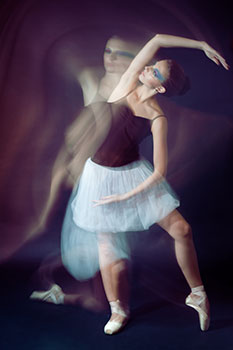Introduction

Time
What do you think of when you hear the word time? Do you think of a clock? Most likely, when someone says time, you think of the word WHEN.
Humans are inherently concerned with time. Time on a clock, time of year, timing in a car, timing in music; it’s all a part of our daily lives. When you breathe, you do it at specific intervals and your chest rises and falls in a smooth timed, rhythmic movement. The deep-rooted rhythms in our movements are a rich source of variation in dance.

Dance and Time
Have you ever thought about time in relation to dance? Time is an element of dance that is used by dancers and choreographers to create contrast, balance, patterns, and variety in dance. Dance movements may have different timing relationships that vary throughout a dance. Learning about time in dance will help you understand the intent of a dancer’s movement.

| Lesson Objectives |
|
Following successful completion of this lesson, students will be able to...
Enduring Understandings
The above objectives correspond with the Alabama Course of Study: Arts Survey standards: 1, 2, 3. |
